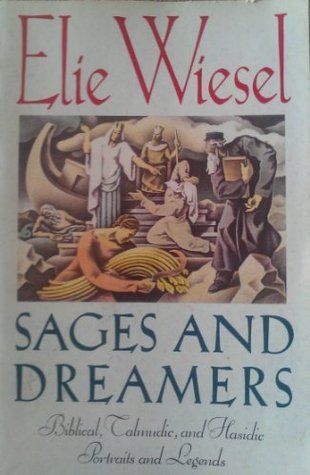Elie Wiesel: A Retrospective, Week #9
 Sages and Dreamers collects twenty-five years of lectures delivered by Elie Wiesel at the 92nd Street Y in New York City, connecting the heroes of the past both in scripture and in Jewish tradition with the present. Each figure, according to his 1991 preface, “stands for an epoch and its problems, conflicts, and aspirations which are often surprisingly close to our own, in this distant century” (14). Wiesel directly engages these stories, which range from biblical history into the First World War, and their many interpretations and challenges with the reader in order to make the history of the Jewish people more personal. The passages we’ve chosen this week highlight the connections between past and present that make Wiesel’s scholarly work so engaging.
Sages and Dreamers collects twenty-five years of lectures delivered by Elie Wiesel at the 92nd Street Y in New York City, connecting the heroes of the past both in scripture and in Jewish tradition with the present. Each figure, according to his 1991 preface, “stands for an epoch and its problems, conflicts, and aspirations which are often surprisingly close to our own, in this distant century” (14). Wiesel directly engages these stories, which range from biblical history into the First World War, and their many interpretations and challenges with the reader in order to make the history of the Jewish people more personal. The passages we’ve chosen this week highlight the connections between past and present that make Wiesel’s scholarly work so engaging.
Passage #1:
I read and reread the story of Noah and experience a joy and an anguish which are not just my own: we have repeated certain sentences so often in four thousand years that they have become immortal.
That is the profound beauty of Scripture: its characters are not mythical; their adventures are not imaginary; they vibrate with life and truth, and thus compel those of us who approach them to enter their lives and search for the meaning. (21)
Passage #2:
From his exile, Ezekiel speaks to all generations, and particularly to ours, for, more than his own contemporaries, we have witnessed the frailty of social structures and the irresistible power of spiritual courage and dreams.
For once upon a time some of us did see a deserted land covered with dry bones.
And yes, we could testify to man’s ability to transform memories of tragedy into necessary hope.
Indeed, no generation can understand Ezekiel as well―as profoundly―as ours. (82)
Passage #3:
As a child I loved to study Talmud but did not really understand it. I thought―or rather, my poor teachers thought―that it was enough to learn a certain number of passages by heart. We were lead to believe that all these laws and arguments and discussions were remote from life and its everyday problems―mine and those of my friends. The issues raised and the solutions offered belonged to another land, another age–not to ours. The only possible reward for studying Talmud was that, with some luck, you could become a melamed (teacher of Talmud). So―why bother?
Today I know that the study of a Talmudic text is an adventure not unrelated to literary endeavour: a three-sentence legend often possesses the suggestive power of a lyrical poem. A discussion on a remote subject often contains more descriptive elements than a historical narrative.
Today I know it would be wrong to look only for the past in Talmud. The Talmud is eternally present. Nothing in it is ever lost. The sages continue their eternal debates and the children continued to be imbued with their fervour. The holiness of Shabbat is still celebrated and, right there, the Temple is burning. And we who read the corresponding passages burn with the Temple―and perhaps for the Temple. (160)
Passage #4:
What [Rabbi Ishmael] told us―what he taught us―is as follows: Yes, I could destroy the world, and the world, ruled by cynicism and hatred, deserves to be destroyed; but to be a Jew is to have all the reasons in the world to destroy, and not to destroy. To be a Jew is to have all the reasons in the world to hate the executioners and not to hate them. To be a Jew is to have all the reasons in the world to mistrust prayer and faith and humanity and power and beauty and truth and language―and yet not to do so. To be a Jew is to continue using words when they heal, and silence when it redeems mankind. (223)
Passage #5:
The Talmud has no end―I mean, no official end. Rav Ashi concluded the editing of the Babylonian Talmud but refrained from sealing it, and he did so on purpose: to allow us to continue. Every one of us may, while exploring its complex Sugyot and illuminating tales, link our soul to its own.
That is why we study Talmud with such passion; and that is why our enemies have, throughout generations of suspicion and bad faith, hated it and us with a similar passion. They envied us the Talmud more than the Bible. The Talmud filled them with fear: they sensed in it our most tangible reason for our survival in exile. That is why they tried to ridicule it, even burn it.
For us, the Talmud represents a possibility of transcending the present and extending its boundaries; we repeat an ancient discussion and we become participants; we study the interpretations of old laws and customs, and they commit us anew. (314)
Please join us for the next week of selected passages at our Facebook!